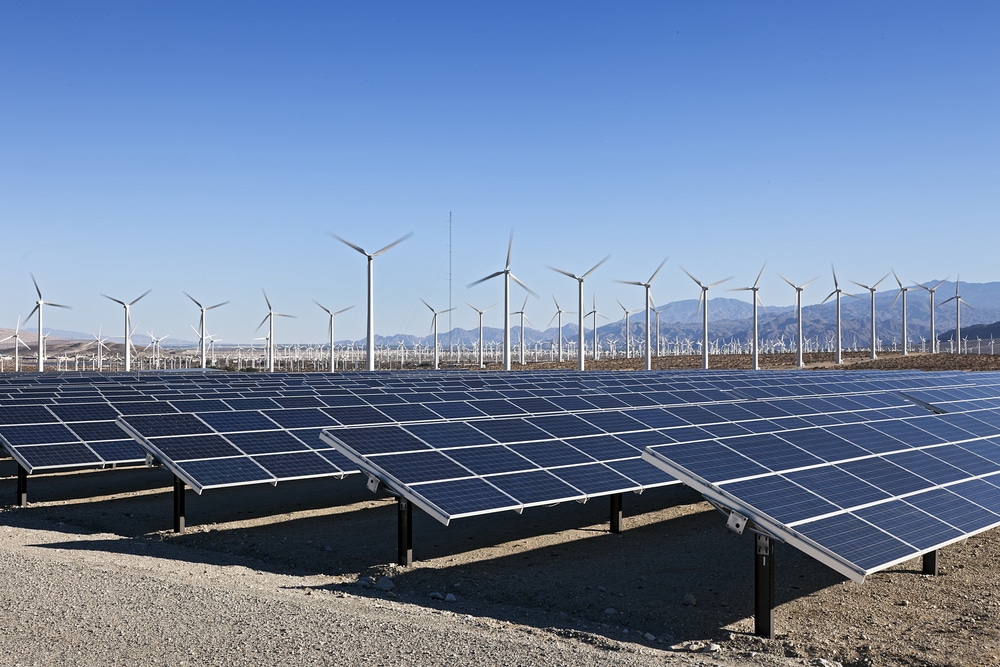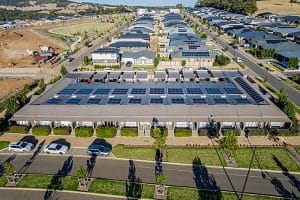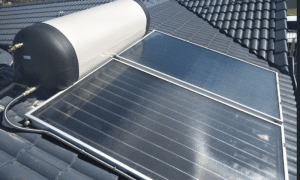The NSW Central West is about to become Australia’s first Renewable Energy Zone (REZ). The formal declaration of the Central-West Orana zone marks a significant step for the state as it looks to transition to net-zero carbon emissions by 2050. The new zone, the first of at least five REZs to be created in NSW, will create thousands of jobs and provide enough cheap, clean and reliable electricity to power more than a million homes.
NSW Energy Minister Matt Kean announced the plan earlier this week, stating that “NSW is driving the nation’s action on climate change by securing our economic and environmental prosperity for decades to come”.

What is a Renewable Energy Zone?
According to the Energy NSW website, REZs are modern-day power stations. They combine renewable energy generation such as wind and solar, storage such as batteries, and high-voltage poles and wires to deliver energy to the homes, businesses, and industries that need it.
By connecting multiple generators and storage in the same location, REZs capitalise on economies of scale to deliver cheap, reliable, and clean electricity for homes and businesses in NSW.
The complexity of REZs means they take a number of years to design and build, and the NSW Government closely engages with local communities and stakeholders on their design and delivery.
The NSW Government’s Electricity Strategy and NSW Electricity Infrastructure Roadmap set out a plan to deliver the following priority REZs:
- A pilot Central-West Orana REZ, with a capacity of 3,000 MW
- New England REZ, with a capacity of up to 8,000 MW
- South-West REZ, (target capacity TBA)
Further REZs will also be developed in the Hunter-Central Coast and Illawarra regions of NSW.

The Central-West Orana Renewable Energy Zone
NSW’s first REZ in the Central-West Orana region is expected to commence construction by the end of 2022 and host 3GW of solar, wind, and storage capacity by the mid-2020s,
The NSW government selected the Central-West Orana region for their pilot REZ because it is close to the existing backbone transmission network, which aids with transmission build costs. It also has a strong mix of energy resources including wind, solar, bioenergy, and hydro and there is significant investor interest. In fact, the NSW Government received 113 registrations of interest representing 27,000 MW of project proposals – more than nine times the amount needed to deliver the 3,000 MW REZ. –
The Central-West Orana REZ includes the areas of Dubbo, Narromine, Wellington, Dunedoo, Gulgong, Mudgee, Cassilis, Coolah, Mendooran, Mumbil, Eumungerie, and Gilgrandra.
To date, the NSW Government has committed over $40 million to the zone.
Why do we need Renewable Energy Zones?
The current National Electricity Market is plagued with cost, security, and reliability issues that need addressing. NSW in particular has a rapidly ageing fleet of coal-fired power stations are scheduled for retirement in the next 15 years. The Australian Energy Market Operator (AEMO) and the CSIRO have found that a combination of renewables and storage will be the cheapest way to deliver new energy in Australia.
The state has also committed to ambitious emissions reductions targets, namely to cut greenhouse gas emissions by 50 per cent on 2005 levels by 2030, leading towards a 2050 net-zero target.
These REZs play a critical role in addressing current infrastructure concerns while also affirming the government’s commitment to “walk the talk” when it comes to achieving emissions targets. Minister Kean, in a thinly-veiled dig at the federal government, reiterated the latter in his statement;
“In NSW, we not only have targets and plans, we also have nation-leading legislation that will deliver on our commitment to halve emissions by 2030 and achieve net zero by 2050.”
The NSW Government expects that REZs will deliver multiple benefits to NSW, including:
- more reliable energy from significant amounts of new energy supply
- energy bill savings from reduced wholesale electricity costs
- emissions reduction from a cleaner energy sector
- community partnership from strategic planning and best practice engagement and benefit sharing.
Dubbo MP Dugald Saunders said the REZ would provide ongoing employment, investment, and economic benefits to the local community for generations to come.
“We have spent a long time consulting and working with local communities to make sure this infrastructure is built where our local community wants it, and I will continue to represent community interests.”

How will the REZs be delivered?
There is significant coordination and collaborative effort required to deliver these REZs in the time and scale required. The Energy Corporation of NSW (Energy Corporation), will lead the planning and development of this infrastructure, assessing and recommending projects that best meet consumers’ and host communities’ long-term interests.
For generators and storage proponents, a new network access scheme will be created within each REZ. Dedicated access rights for generation and storage projects will provide more certainty to investors, incentivising them to commit to projects in the REZ and lowering project costs.
An Electricity Infrastructure Investment Safeguard and Consumer Trustee will be in place to ensure that the NSW Government’s objectives for consumers, communities and the long-term needs of the energy system are met.
NSW Electricity Infrastructure Roadmap
REZs are one of the key facets of the NSW Government’s plan to transform the state’s electricity system into one that is cheap, clean, and reliable.
The Electricity Infrastructure Roadmap is set out to achieve the following objectives:
- Attract up to $32 billion in private investment for regional energy infrastructure by 2030
- Support 6,300 construction jobs and 2,800 ongoing jobs, mostly in regional NSW
- Save around $130 a year on the average NSW household electricity bill and $430 a year on the average small business electricity bill between 2023 and 2040
- Help reduce NSW electricity emissions by 90 million tonnes by 2030 and support NSW to deliver on its net zero by 2050 ambitions
Key Roadmap actions include:
- Renewable Energy Zones
- Transmission development scheme
- Electricity Infrastructure Investment Safeguard
- Pumped Hydro Recoverable Grants Program
- Internationally competitive NSW industries
For further information on REZs, the NSW Government has created a fact sheet and frequently asked questions.






































